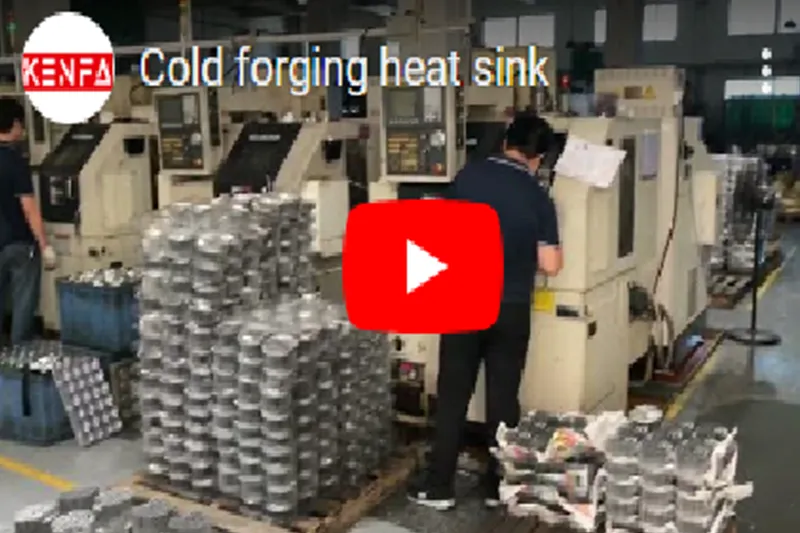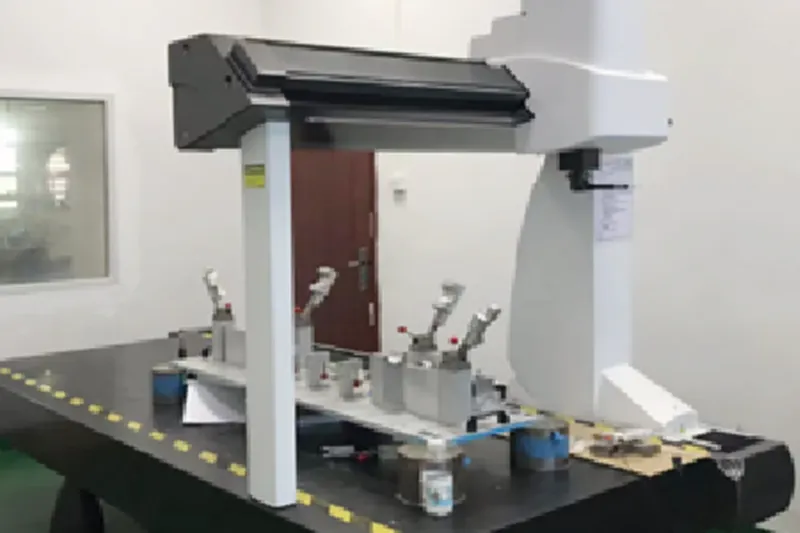Cold Forged Heat Sinks
The cold forged heat sink is a commonly used type of heatsink in electronic equipment, which involves pressing metal materials such as aluminum or copper into a specific shape using high pressure on a cold forging machine.
What Is A Cold Forged Heat Sink?
Cold forged heat sink is a unique design applied in the field of heat dissipation, and its manufacturing process is different from traditional die cast heat sinks. The manufacturing process of cold forging radiators mainly uses cold forging technology, which is a method of plastic deformation of metal at room temperature by pressing it. In the manufacturing of cold forged heat sinks, high-quality aluminum alloys, copper, or other high thermal conductivity metals are selected to ensure that the product has excellent heat dissipation performance.
Then, through cold forging process, the metal material is subjected to high-pressure plastic forming at room temperature, which is more energy-saving and environmentally friendly compared to traditional hot forging process, reducing energy consumption. It has a higher density and a more uniform organizational structure, making it perform better in heat dissipation. In addition, due to the use of cold forging technology, the surface of the product is smoother and less prone to porosity and inclusions, which improves the overall quality of the heat sink.
The Characteristics of The Cold Forged Heat Sinks?
1, It is used the material is generally Al 1050 or Cu1100.
2. The heat sink surface can be sprayed with oil or powder, anodized finshing;
3. The mold is expensive, but the mold service life is long, suitable for large quantity of products;
4. Product processing time is relatively low, high production efficiency, low unit price;
5. Generally speaking, the length, width and height of the products are 500X500X100mm we can make. If the size exceeds this, we will cooperate with our strategic suppliers to complete the production due to the limitation of environmental protection and factory equipment;
6. Our usual process of making this product is to get the customer’s drawing, we will do the DFM feedback, and then make the sample. After the sample is finally confirmed, we will mass produce;
7. Our general sample production cycle is 3 weeks, the production cycle of mass production is 4 weeks
Cold forged Heat Sink Is Used In LED Lighting
Die Cold forged heat sinks are used in the field of LED lighting. Due to the use of high thermal conductivity aluminum materials such as AL1100, 1050, or copper C1100, cold forged heat sinks can quickly diffuse a large amount of heat from LED chips to the surface of the heat sink, and then dissipate the heat into the air through convection. The fins of cold forged heat sinks can be circular or elliptical in shape, which is also beneficial for low-power LED chip heat dissipation, Because these unique shapes ensure that heat is radiated into the air through the optimal spatial distance, this type of cold forged heat sink is commonly used for heat dissipation in LED spotlights and down lights.
Compared to the heat sink produced by die-casting technology, it has good thermal conductivity and diverse surface treatments, such as anodizing. However, die-casting can only be used for oil spray or paint treatment. Therefore, cold forging heat sinks can usually not only serve as a part of the heat sink function, but also achieve the ID design and surface treatment of the appearance of lamps. Sometimes, needle shaped heat dissipation columns can be designed. Due to the fact that in high-power IGBT liquid cooling plates, this type of heat sink can serve as a part of the microchannel of the liquid cooling plate. In short, cold forging heat sinks are widely used and are an important process choice in the design of heat sinks and liquid cooling plates

Notes on Designing Cold Forged Heat Sink .
In the processing of cold forging heat sink, the design of the flow channel needs to be considered in the mold to ensure that the metal material can deform uniformly during the cold forging process and avoid defects. Temperature and pressure are two other important processing parameters that require precise control based on specific metal materials and product shapes.
In particular, the proportion of fin height and spacing of the heat sink, the thickness of the bottom plate, etc., also need to consider the selection and maintenance of cold forging equipment throughout the entire processing process to ensure the stability and efficiency of the production process. The precise control of these process parameters will directly affect the forming quality and performance of cold forging heat sink.
Cold Forged Heat Sink Quality Control
The The quality control of cold forged heat sinks is a key step in ensuring product performance and reliability. Strictly screen the raw materials and select aluminum alloys or other metal materials with high thermal conductivity and high quality to ensure that the product has good thermal conductivity. Mold design and manufacturing should be precise and reliable to ensure that the appearance and structure of the radiator meet the design standards. In the cold forging process, it is necessary to precisely control parameters such as temperature and pressure to prevent deformation or internal defects. The inspection of finished products is also a crucial step.
Ensuring the integrity of the internal structure of the product and the absence of pores and inclusions through methods such as X-ray inspection and ultrasonic testing. Establish a comprehensive production record and traceability system to record and monitor each production process for traceability and improvement in case of problems. Through these quality control measures, it can be ensured that the cold forged heat sink achieves a high level of quality in terms of heat dissipation, product appearance, and internal structure.





